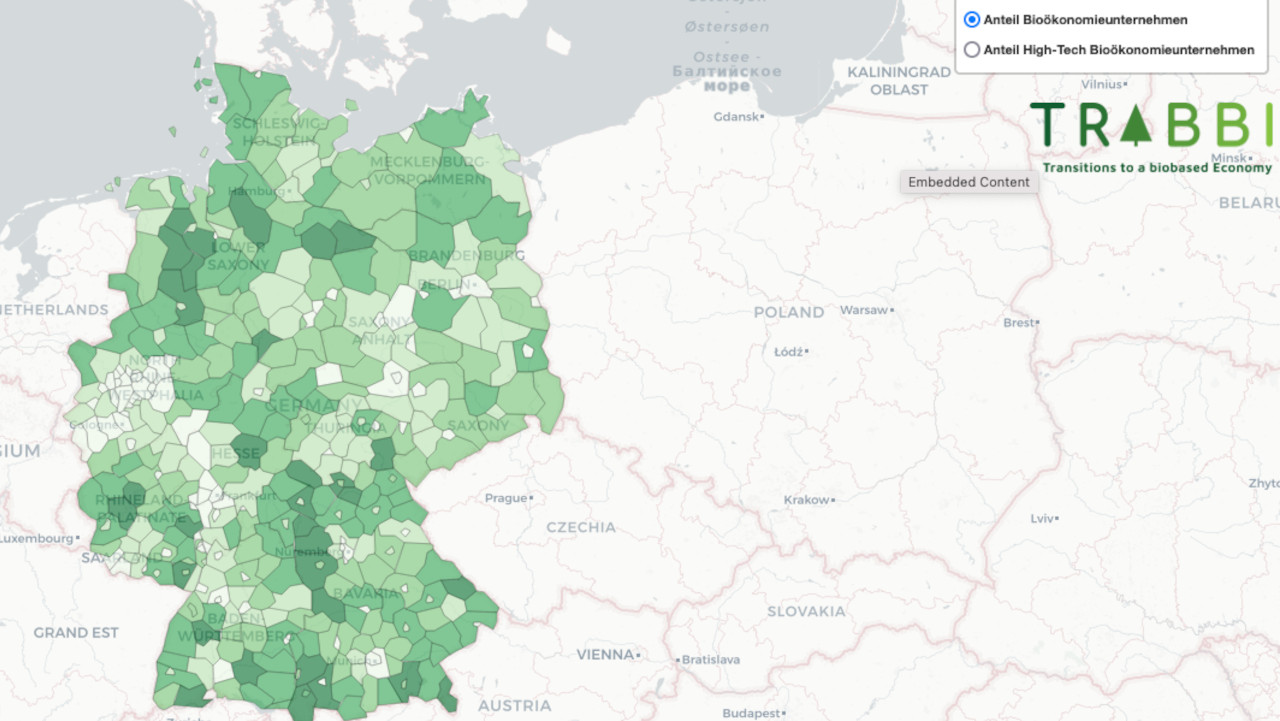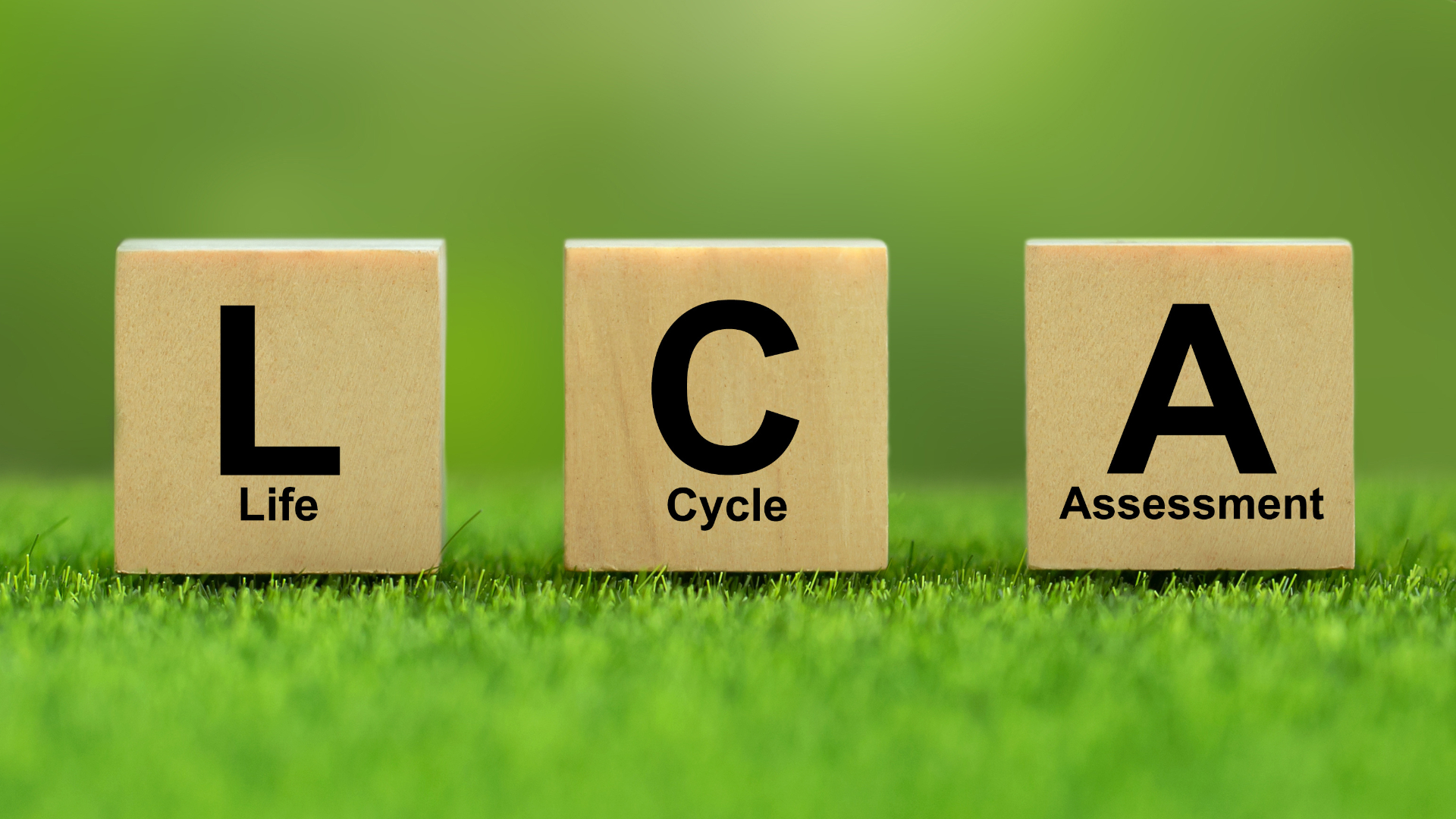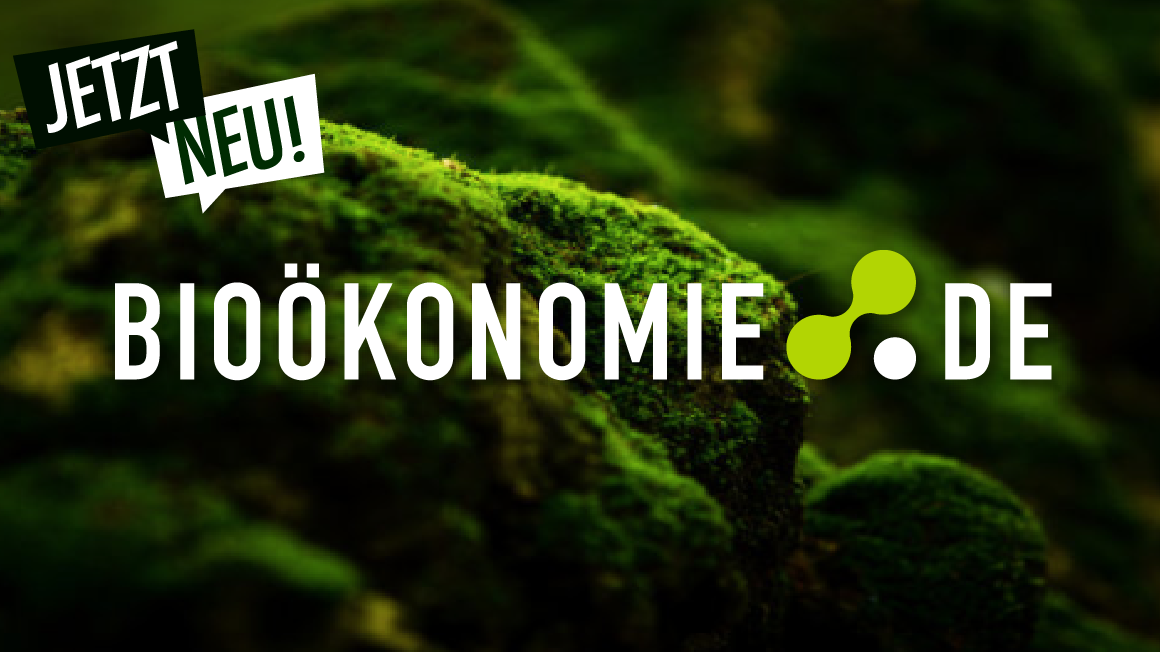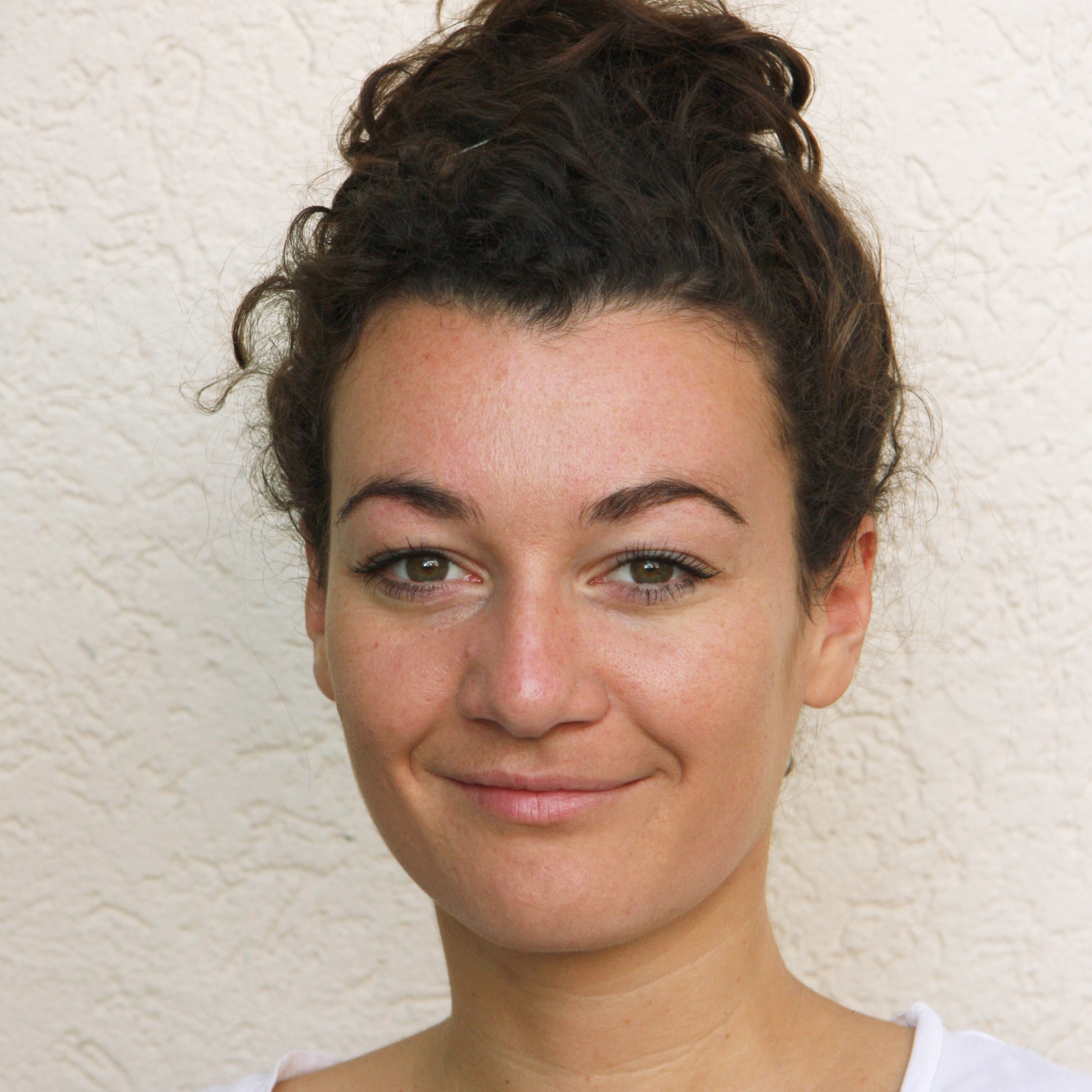AI language model generates map of bioeconomy companies
A BMBF-funded research team has trained a language model with web texts from 680,000 German companies and has identified and localised those with bioeconomy activities.

In the TRABBI junior research group, which is funded by the Federal Ministry of Education and Research (BMBF), economic geographers Lukas Kriesch and Sebastian Losacker from the University of Giessen have obtained regionalised data on bioeconomy companies in Germany. They report on their analysis in the scientific journal "REGION - the Journal of ERSA".
The authors use modern AI-based natural language processing methods to analyse texts from 678,381 companies in Germany. "We have trained a language model that is able to identify bioeconomy activities in text sections on company websites. We use this information to better understand the importance of the bioeconomy in different regions in Germany," says Lukas Kriesch.
Web mining with the help of AI technology
The researchers used a manually created training dataset with text examples on bioeconomy activities for web mining on the topic of bioeconomy.
The researchers used the dataset to test various hypotheses from bioeconomy research. In total, 21% of the companies (142,949 companies) have a connection to bioeconomy activities (e.g. biofuels, agriculture, timber industry). Of these, around 9% (13,554 companies) are active in the high-tech sector (e.g. biotechnology, bioplastics). However, the proportion of bioeconomy companies differs significantly between regions in some cases. For example, although the proportion is higher on average in rural regions, high-tech companies are concentrated in urban regions.
"The political narrative of the bioeconomy as an opportunity for regional development in structurally weak regions can only become a reality if the bioeconomy does not contribute to underpinning existing regional inequalities in value creation," says Lukas Kriesch.
Bottom-up approach for bioeconomy research
The authors hope that the publication will encourage other researchers to use this data and analyse the regional effects of the bioeconomy in order to derive recommendations for political actors. The data explorer for the study is freely accessible.
"The bioeconomy encompasses a wide variety of sectors and industries and therefore cannot be accurately mapped by official statistics. Our approach makes it possible for the first time to identify the bioeconomy bottom-up, so to speak. The data can be used as a basis for gaining region-specific insights into the bioeconomy," says Kriesch.
The TRABBI project, which was launched in 2023, is part of the BMBF funding programme "Bioeconomy as Social Change". Among other things, it supports junior research groups that are researching the bio-based economy from a social, political and economic science perspective. The aim is to understand the transition to a bioeconomy in all its facets as comprehensively as possible, to analyse and evaluate its effects and to identify consequences and options for action. In TRABBI, the team led by Kriesch and Losacker is investigating the transformation process towards greater sustainability in the construction sector. The project will be funded by the BMBF with 2.3 million euros over the next five years.
pg


